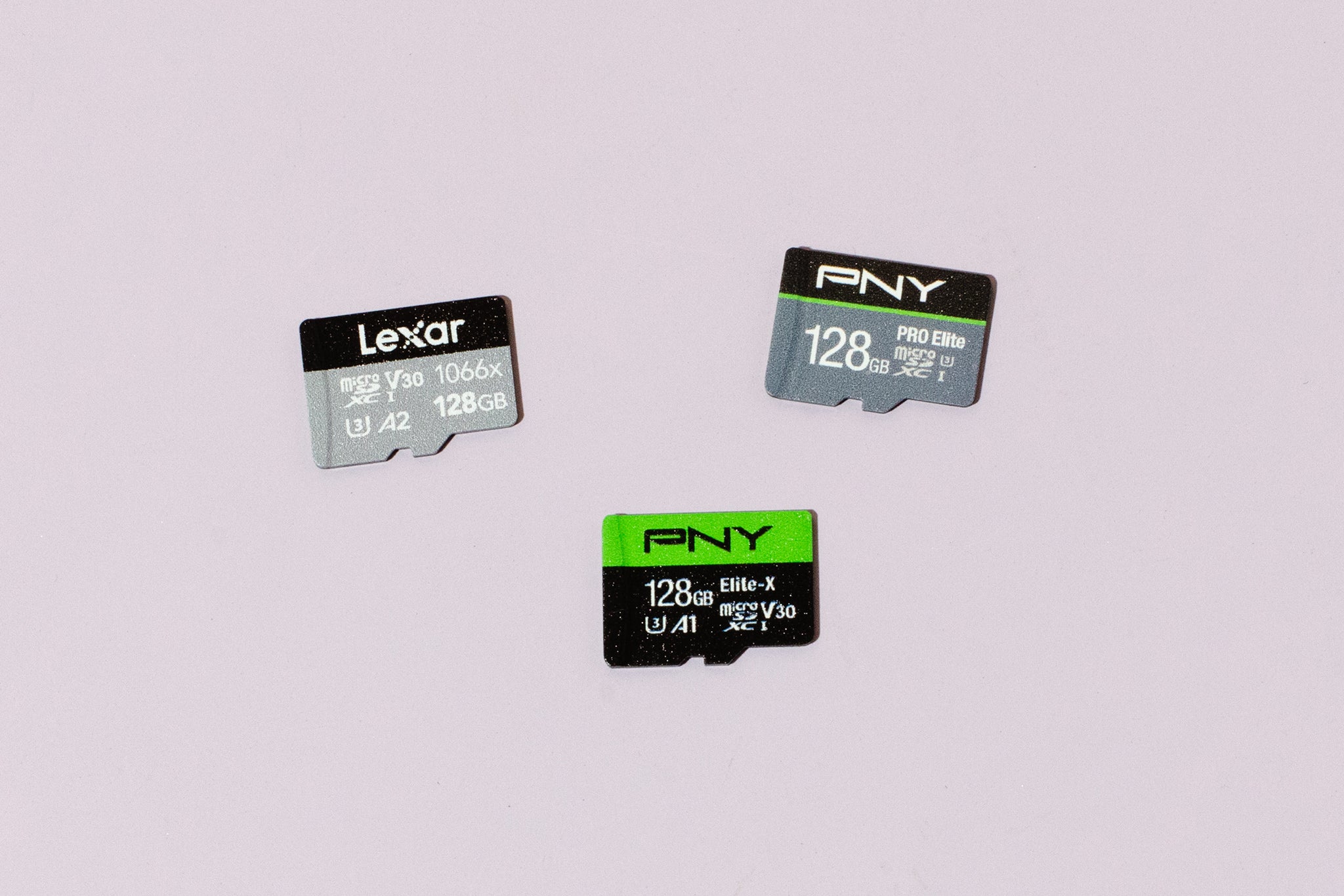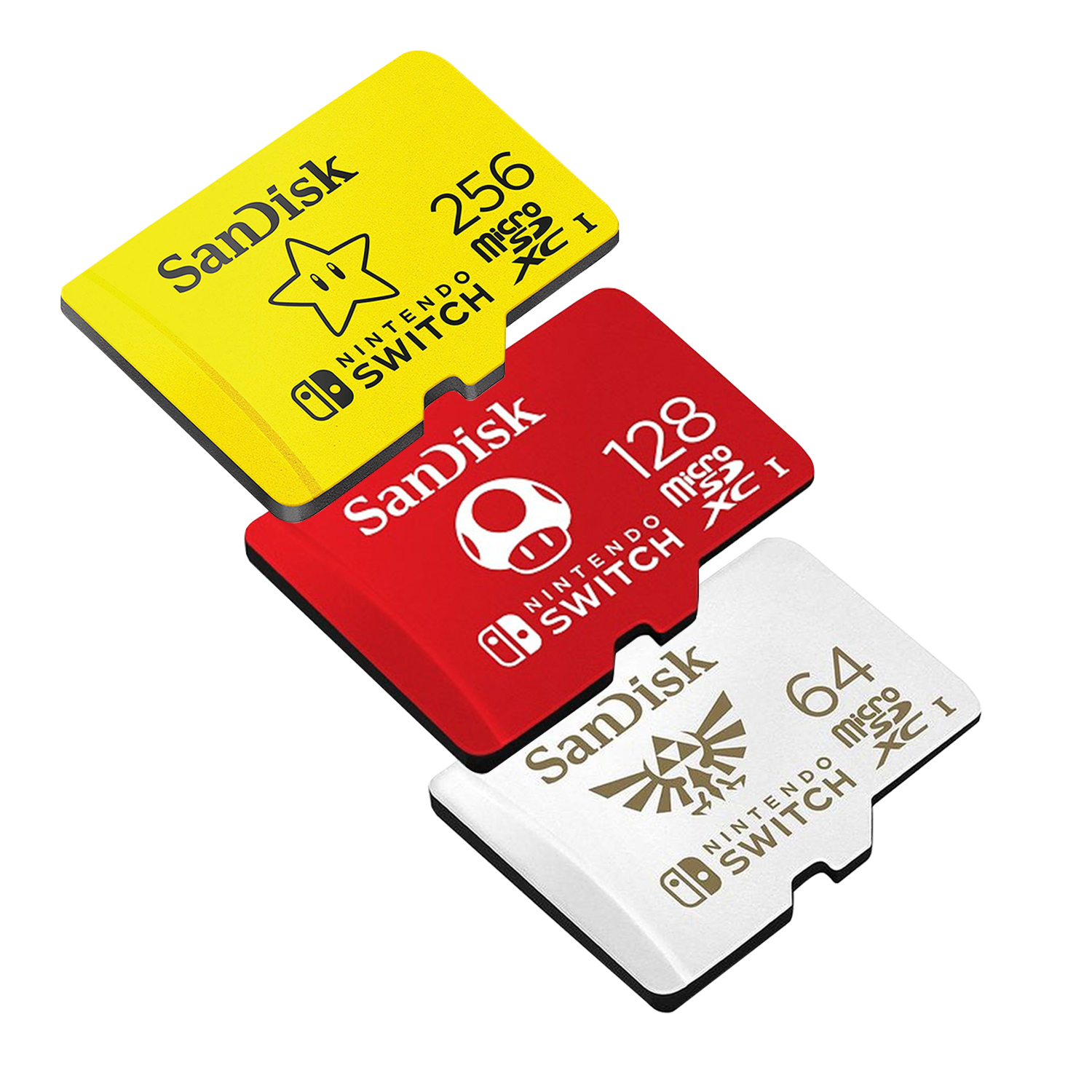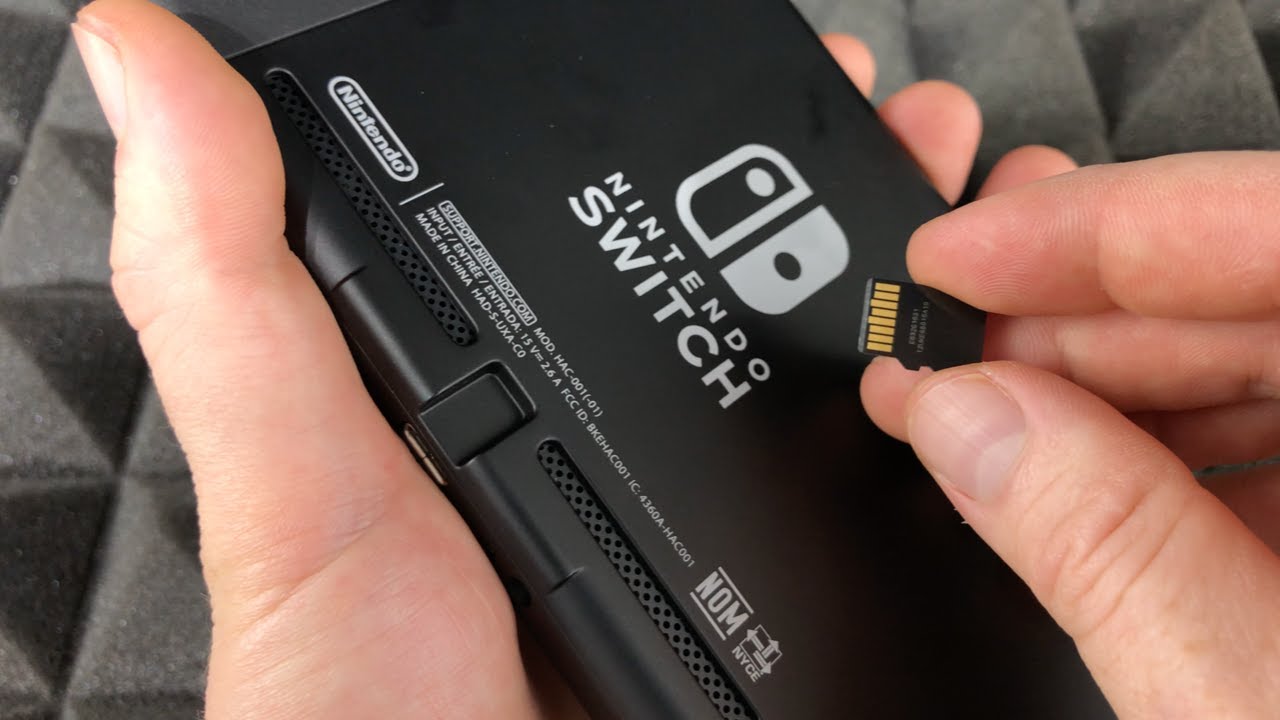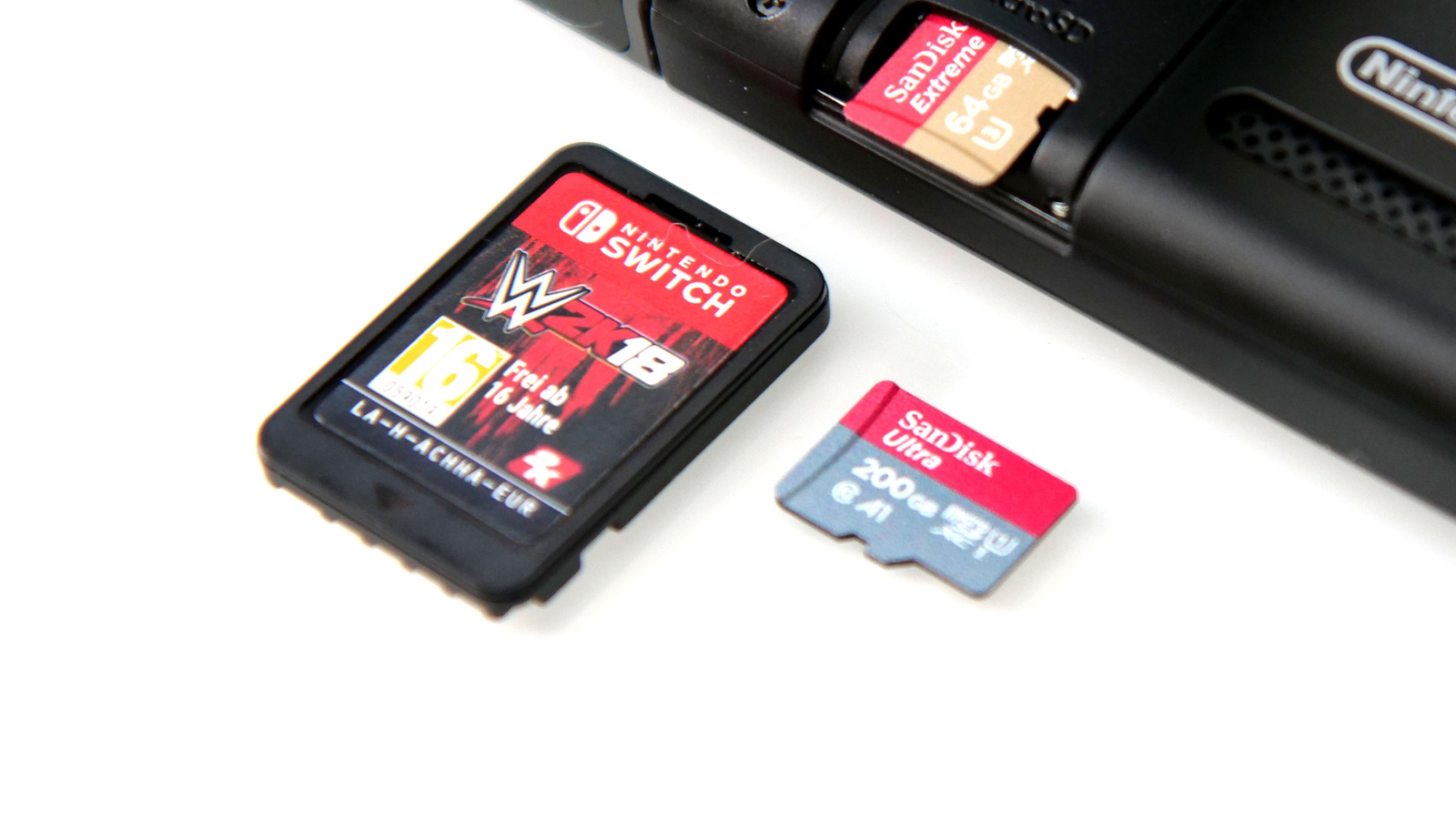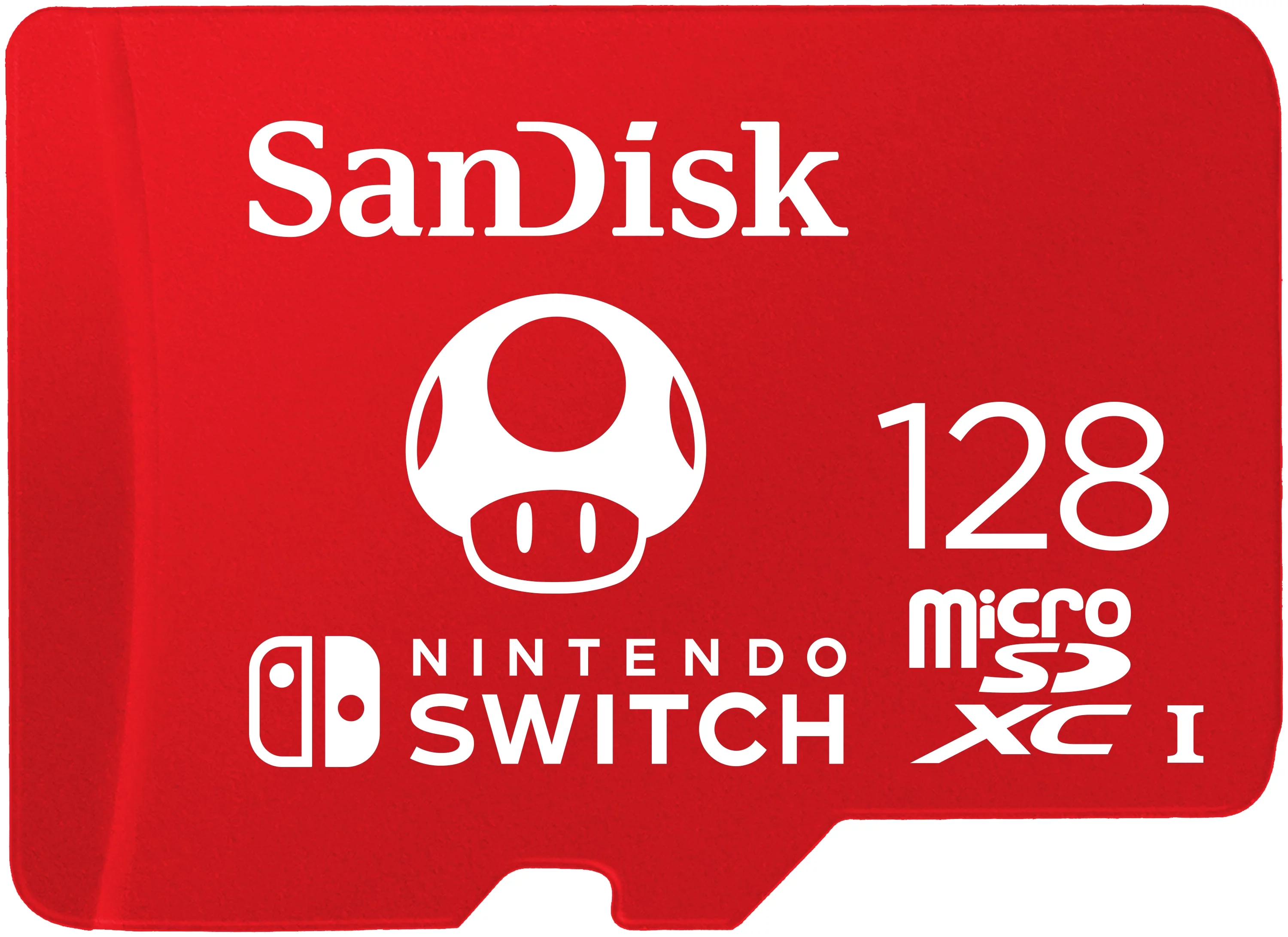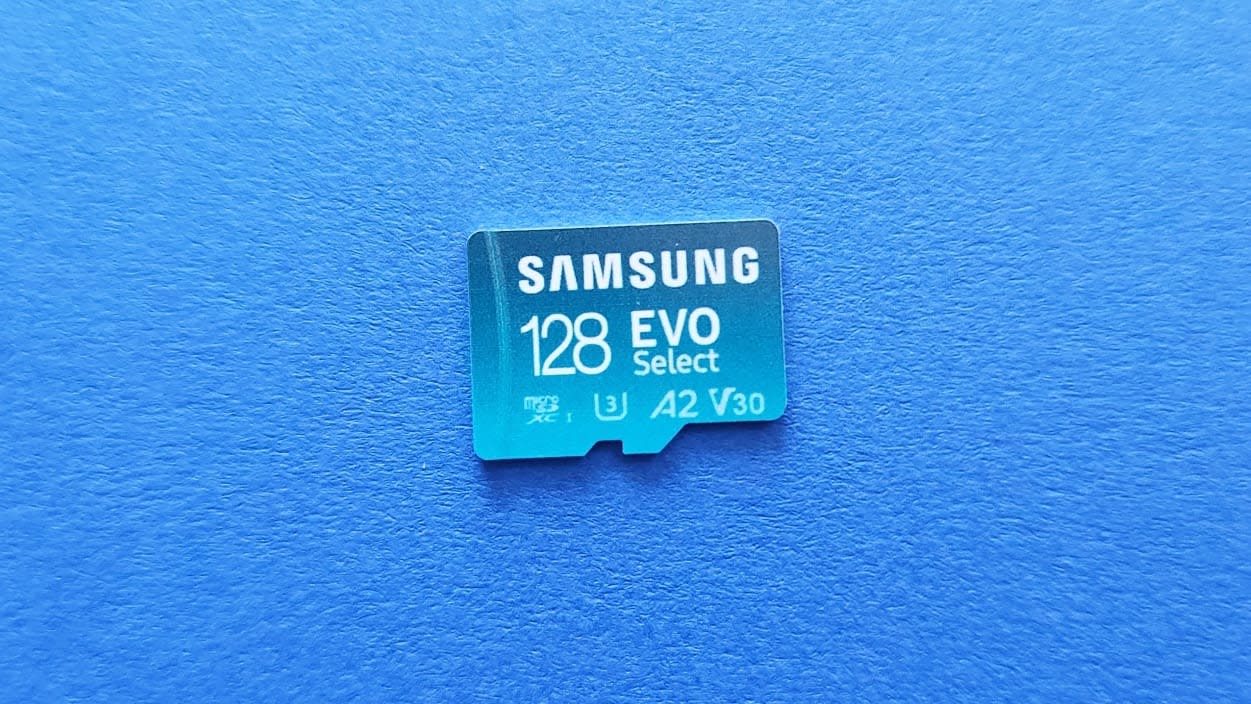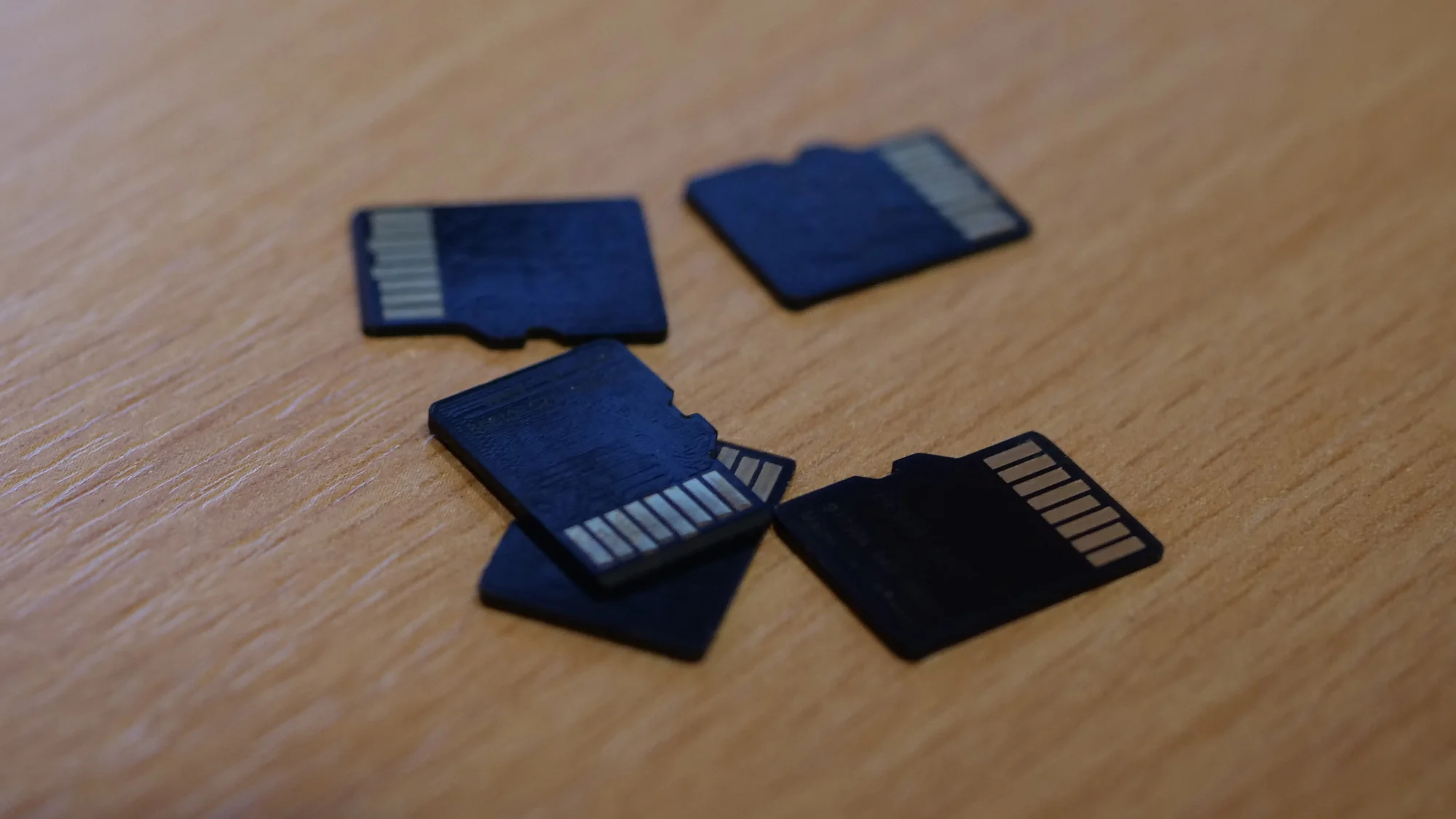Introduction
Welcome to the world of portable storage! In this digital age, where we capture countless photos and videos, store our favorite music, and carry around important documents, having a reliable and spacious storage solution is crucial. That’s where the mighty Micro SD card comes into play.
A Micro SD card, short for Micro Secure Digital card, is a small, removable flash memory card that provides a convenient way to expand the storage capacity of various devices. From smartphones to tablets, digital cameras to gaming consoles, Micro SD cards have become the go-to choice for expanding storage options.
But what exactly makes a Micro SD card valuable? In simple terms, it’s the ability to increase the storage capacity of your device without the need to replace the built-in memory. Imagine having the freedom to store thousands of high-resolution photos, hours of HD videos, or an extensive music library all on a small, portable card.
Micro SD cards are available in different sizes, each offering a specific storage capacity. As technology advances, we are witnessing a rapid increase in Micro SD card sizes, allowing users to store more data than ever before.
In this article, we’ll explore the evolution of Micro SD card sizes, discuss the largest Micro SD card available in the market, and highlight the benefits and limitations of using a large capacity Micro SD card. So, let’s dive in and unravel the world of Micro SD cards!
What is a Micro SD Card?
A Micro SD card is a small, removable flash memory card that provides additional storage capacity for various electronic devices. It is designed to be compact, durable, and easily interchangeable, making it the ideal solution for expanding the storage capabilities of smartphones, tablets, digital cameras, and more.
The term “Micro” refers to the physical size of the card, which is smaller than a standard SD card. Despite its small size, a Micro SD card can offer significant storage capacity, ranging from a few gigabytes to terabytes, enabling users to store a wide range of data, including photos, videos, music, documents, and even applications.
Micro SD cards are compatible with a wide range of devices that support their use. Many smartphones and tablets come with a built-in Micro SD card slot, allowing users to easily insert and remove the card as needed. Additionally, some laptops, digital cameras, action cameras, and gaming consoles also feature Micro SD card slots or offer adapters to support their usage.
One of the key advantages of Micro SD cards is their versatility. They can be used to expand the storage capacity of a device or to transfer data between multiple devices. For example, you can use a Micro SD card to transfer photos from a digital camera to a computer or share files between different smartphones or tablets.
Micro SD cards are also known for their durability and stability. They are designed to withstand various environmental conditions, including temperature fluctuations, humidity, and even water resistance in some cases. This makes them suitable for use in outdoor activities, such as hiking, camping, or recording action-packed moments.
Overall, Micro SD cards have revolutionized the way we store and transfer data. With their compact size, high storage capacity, and wide compatibility, they have become an essential accessory for anyone who needs additional storage for their electronic devices. Whether you’re a professional photographer, a music enthusiast, or someone who simply needs more space for their important files, a Micro SD card is a must-have solution.
Understanding Micro SD Card Storage Capacity
When it comes to choosing a Micro SD card, understanding its storage capacity is crucial. The storage capacity of a Micro SD card refers to the amount of data it can hold, which is measured in gigabytes (GB) or terabytes (TB).
The storage capacity of a Micro SD card determines how many files you can store on it. A higher capacity card allows you to store more data, such as photos, videos, music, and documents. It gives you the freedom to carry a vast amount of content with you wherever you go.
Micro SD card storage capacities have significantly evolved over time. In the early days, Micro SD cards had limited storage capacity, generally ranging from a few hundred megabytes to a few gigabytes. However, with advancements in technology, Micro SD cards now offer much larger capacities, reaching up to several terabytes.
It’s important to note that the actual amount of usable storage on a Micro SD card is slightly less than the stated capacity. This is because a portion of the storage is reserved for the card’s file system and formatting. For example, a 64GB Micro SD card may have around 60GB of usable storage.
It’s also worth mentioning that different devices and file types require varying amounts of storage space. For example, high-resolution photos and videos consume more space compared to standard quality ones. Similarly, large applications or games also require ample storage capacity. Therefore, it’s essential to consider your specific needs and usage patterns when selecting a Micro SD card.
When shopping for a Micro SD card, you will come across various storage capacity options, ranging from a few gigabytes to several terabytes. The choice depends on your requirements. If you mainly use your device for basic tasks like document storage and music playback, a lower capacity card may be sufficient. However, if you’re an avid photographer or videographer, or you have a large collection of high-definition movies, opting for a higher capacity card is recommended.
Ultimately, understanding the storage capacity of a Micro SD card and how it aligns with your needs is crucial. By choosing the right capacity, you can ensure that you always have enough space to store your important files and memories, without compromising on performance or functionality.
Evolution of Micro SD Card Sizes
The evolution of Micro SD card sizes has been driven by the need for increased storage capacity and the constant demand for smaller, more compact devices. Over the years, Micro SD cards have undergone several size changes to keep up with technological advancements.
The first generation of Micro SD cards, also known as Micro SD or TransFlash cards, were introduced in 2005 by SanDisk. These cards had a maximum storage capacity of 128 megabytes (MB) and were a significant improvement over the existing miniSD cards in terms of size and performance.
In 2007, the second generation of Micro SD cards, known as Micro SDHC (Secure Digital High Capacity) cards, was introduced. These cards increased the maximum storage capacity to 32 gigabytes (GB). The Micro SDHC cards maintained the same physical dimensions as the original Micro SD cards but utilized a different file system to support the higher capacity.
In 2010, the third generation of Micro SD cards, known as Micro SDXC (Secure Digital eXtended Capacity) cards, was introduced. These cards pushed the boundaries of storage capacity even further, reaching up to 2 terabytes (TB). Micro SDXC cards use the exFAT file system, allowing for larger file sizes and increased compatibility with various devices.
Alongside the different generations of Micro SD cards, there have also been changes in their physical dimensions. The original Micro SD card measures 15mm x 11mm x 1mm, making it one of the smallest memory card formats available. To ensure backward compatibility, Micro SDHC and Micro SDXC cards maintain the same physical dimensions as the original Micro SD card.
However, to cater to different device requirements, adapters are available that allow Micro SD cards to be used in devices with SD and miniSD card slots. These adapters enable users to easily transfer data between devices with different card slot sizes.
The evolution of Micro SD card sizes has revolutionized the way we use portable storage. From the limited capacity of the early Micro SD cards to the massive storage capabilities of Micro SDXC cards, these advancements have provided users with solutions to store and carry an ever-increasing amount of data in a compact format.
As technology continues to progress, it’s likely that we will see further developments in Micro SD card sizes to meet the growing demand for larger storage capacities. Whether it’s capturing high-resolution photos, shooting 4K videos, or storing extensive music libraries, Micro SD cards will continue to play a crucial role in expanding the storage capabilities of our favorite devices.
Commonly Available Micro SD Card Sizes
Micro SD cards are available in a range of different storage capacities to cater to varying user needs and device requirements. Here are the most commonly available Micro SD card sizes in the market:
- 2GB: While becoming less common, 2GB Micro SD cards were one of the early storage options. These cards are suitable for basic storage needs like documents, music, and small multimedia files.
- 4GB: 4GB Micro SD cards offer slightly more storage space than the 2GB cards and are still used for basic storage purposes.
- 8GB: 8GB Micro SD cards are suitable for those who need to store a moderate amount of data, such as photos, videos, music, and documents.
- 16GB: 16GB Micro SD cards are a popular choice for casual users who want to store a decent amount of multimedia content without breaking the bank.
- 32GB: 32GB Micro SD cards are widely used and offer ample storage for a variety of applications, including photography, video recording, and gaming.
- 64GB: 64GB Micro SD cards are great for users who require extra storage capacity for their expanding digital content library, including HD videos and large applications.
- 128GB: 128GB Micro SD cards provide a substantial amount of storage for power users, professionals, and content creators who deal with large files and high-resolution media.
- 256GB: 256GB Micro SD cards offer an extensive amount of storage and are ideal for professionals in fields such as photography, videography, and music production.
- 512GB: 512GB Micro SD cards are the epitome of high-capacity storage, offering a massive amount of space for storing extensive multimedia libraries, including thousands of photos, hours of videos, and large applications.
It’s worth noting that the available storage capacity may vary between different manufacturers and models. It’s always essential to check the specifications and compatibility of your device before purchasing a Micro SD card to ensure optimal performance and proper usage.
The wide range of Micro SD card sizes available in the market allows users to choose the capacity that best suits their needs and budget. Whether you’re a casual user with basic storage requirements or a professional requiring ample space for high-definition content, there’s a Micro SD card size for everyone.
Factors to Consider When Choosing a Micro SD Card
Choosing the right Micro SD card requires careful consideration of several factors to ensure compatibility, performance, and optimal storage capacity. Here are some key factors to consider when selecting a Micro SD card:
- Storage Capacity: Determine your storage needs based on the type and amount of data you plan to store. Consider whether you need ample space for photos, videos, music, or applications, and choose a Micro SD card with a suitable capacity.
- Speed Class: The speed class of a Micro SD card refers to its data transfer speed. Higher speed classes, denoted by a number inside a U-shaped symbol, can handle faster read and write speeds, which is crucial for tasks like capturing high-quality videos or running applications smoothly.
- Compatibility: Ensure that the Micro SD card is compatible with your device. Check the device’s specifications or consult the manufacturer to determine the supported Micro SD card types and maximum storage capacity it can handle.
- Usage Requirements: Consider the intended usage of the Micro SD card. If you plan to use it for continuous shooting in a camera or recording videos in 4K resolution, opt for a card with a high write speed and ample storage capacity.
- Reliability: Look for Micro SD cards from reputable brands known for their reliability and quality. Read reviews and check the card’s reliability ratings to ensure you choose a card that will withstand regular usage and offer long-term data protection.
- Price: Consider your budget and the value provided by the Micro SD card. Determine the right balance between storage capacity, speed, and price to find the best option for your needs.
- Warranty: Check the warranty offered by the manufacturer to ensure you have protection against any potential defects or issues. A longer warranty period indicates the manufacturer’s confidence in the quality and durability of the Micro SD card.
By considering these factors, you can make an informed decision and choose a Micro SD card that meets your requirements. Remember to check the specifications of your device and the recommended Micro SD card types provided by the manufacturer to ensure optimal compatibility and performance.
The Largest Micro SD Card Available
As technology continues to advance, the storage capacity of Micro SD cards continues to expand, allowing users to store sizable amounts of data on a single, portable card. The largest Micro SD card currently available is the 1 terabyte (TB) Micro SD card.
A 1TB Micro SD card provides an enormous amount of storage space, capable of holding thousands of high-resolution photos, hundreds of hours of videos, a vast music library, and even large applications and games. With this massive storage capacity, users can have all their data and media content in one convenient and portable solution.
It’s important to note that while the 1TB Micro SD card may be the largest currently available, it’s not the only option. Micro SD cards come in various storage capacities, ranging from a few gigabytes to several terabytes. The choice of storage capacity depends on individual needs and device compatibility.
Although the 1TB Micro SD card offers significant storage capabilities, it’s essential to ensure compatibility with your device. Older devices may not support such large storage capacities, or there may be limitations imposed by the device’s operating system. Therefore, it’s crucial to check the specifications of your device and consult the manufacturer’s recommendations before investing in a high-capacity Micro SD card.
As technology progresses, we can expect even larger storage capacities to become available in the future. Manufacturers are constantly pushing the boundaries, developing new technologies to meet the ever-increasing demand for storage space. Stay tuned for future advancements in Micro SD card capacities!
How to Use the Largest Micro SD Card
Using the largest Micro SD card available, such as a 1 terabyte (TB) card, is a straightforward process. Here are the steps to follow:
- Check compatibility: Ensure that your device is compatible with Micro SD cards and supports the storage capacity of the 1TB card. Refer to the device’s user manual or specifications to confirm compatibility.
- Insert the Micro SD card: Locate the Micro SD card slot on your device. Insert the 1TB Micro SD card into the slot, making sure it is inserted in the correct orientation. Most devices require the gold contacts on the card to be facing downward.
- Format the card: If the Micro SD card is new or has not been formatted for use with your device, it may need to be formatted. Formatting prepares the card for use and ensures compatibility. Refer to your device’s user manual or settings menu for instructions on how to format a Micro SD card.
- Transfer or store data: Once the 1TB Micro SD card is inserted and formatted, you can begin transferring or storing your data. Connect your device to a computer using a USB cable or utilize built-in options to transfer files between the device’s internal memory and the Micro SD card. Follow the specific instructions provided by your device’s operating system or software for data transfer.
- Manage your data: To efficiently manage the data on your 1TB Micro SD card, organize your files into folders or categories. This will make it easier to locate and access specific files when needed.
- Regularly back up your data: Given the significant storage capacity of a 1TB Micro SD card, it’s essential to regularly back up your data to prevent potential data loss. Consider creating multiple copies of important files or utilizing cloud storage services for additional data redundancy.
- Eject the Micro SD card: Before removing the 1TB Micro SD card from your device, make sure to properly eject it to avoid data corruption. Follow the recommended procedure provided by your device’s operating system or software to safely remove the Micro SD card.
By following these steps, you can effectively use the largest Micro SD card available and harness its massive storage capacity to store and access your digital content conveniently.
Benefits of Using a Large Micro SD Card
Using a large Micro SD card, such as a 1 terabyte (TB) card, offers numerous benefits and advantages for users. Here are some of the key benefits:
- Ample storage space: The primary advantage of a large Micro SD card is the significant amount of storage space it provides. With a 1TB Micro SD card, you can store and carry an immense amount of data, including photos, videos, music, documents, and applications. This eliminates the need to constantly shuffle files or worry about running out of space.
- Flexibility and convenience: A large Micro SD card offers the flexibility to have all your essential files, media libraries, and applications in one portable and easily accessible place. You can carry your entire music collection, a wide range of videos, and countless photos without the need for additional storage devices.
- Multimedia powerhouse: For multimedia enthusiasts, a large Micro SD card allows for the storage of high-resolution photos, 4K videos, and large multimedia files without compromising on quality. You can capture precious memories in stunning detail or watch your favorite movies and videos on the go.
- Increased productivity: With ample storage on a large Micro SD card, you can keep important documents, presentations, and work-related files with you at all times. This ensures that you have access to critical information whenever you need it, promoting productivity and efficiency.
- Enhanced gaming experience: Gaming enthusiasts can enjoy the benefits of a large Micro SD card by storing multiple games and their associated files without worrying about storage limitations. This enables seamless gameplay and the ability to try out new games without the need to uninstall existing ones.
- No reliance on internet connectivity: By having a large Micro SD card, you can have your entertainment and essential files readily available without relying on internet connectivity. This is particularly useful when traveling or in areas with limited internet access.
- Data organization: A large Micro SD card allows for efficient file organization. You can create folders and categories to easily manage and locate specific files, making it simple to find photos, videos, or documents when needed.
Overall, the benefits of using a large Micro SD card extend beyond just storage capacity. It provides convenience, flexibility, and the ability to carry an extensive amount of data, promoting productivity, entertainment, and organization. With a large Micro SD card, you can truly maximize the potential of your device and enjoy a seamless digital experience.
Limitations of Large Micro SD Cards
While large Micro SD cards offer significant advantages, it’s important to be aware of their limitations. Here are some limitations associated with using large Micro SD cards:
- Cost: Large Micro SD cards with high storage capacities often come with a higher price tag. The cost per gigabyte increases as the capacity increases. Users should consider their budget and the value they derive from the additional storage space.
- Compatibility: Some older devices may not support large Micro SD cards, especially those with storage capacities beyond 32GB. It’s crucial to check the compatibility of your device to ensure it can handle the specific storage capacity you wish to use.
- Performance limitations: In some cases, large Micro SD cards may have slower read and write speeds compared to smaller capacity cards. This can lead to longer transfer times and slower app loading times, particularly when dealing with large files.
- Device dependency: If you primarily rely on a single device that uses a specific operating system, the data stored on the Micro SD card may not be accessible on other devices. This can limit the portability and convenience of the data stored on the card.
- Data loss risk: With larger storage capacities comes a higher risk of potential data loss. If a large Micro SD card fails or gets damaged, recovering and restoring a significant amount of data can be challenging and potentially costly.
- Physical limitations: The larger the capacity of a Micro SD card, the more susceptible it can be to physical damage. Handling, dropping, or exposing the card to extreme temperatures or moisture can increase the risk of data loss or card malfunction.
- File system limitations: Some operating systems and devices have limitations on the maximum file size or the number of files that can be stored on a single Micro SD card. It’s important to be aware of these limitations to avoid any potential issues when managing your files.
Understanding these limitations can help users make informed decisions when choosing and utilizing large Micro SD cards. It’s essential to consider compatibility, performance requirements, and the necessary precautions to protect the data stored on the card.
Frequently Asked Questions (FAQs)
Here are some frequently asked questions about Micro SD cards:
- 1. What devices are compatible with Micro SD cards?
- 2. How do I insert and remove a Micro SD card?
- 3. Can I use a Micro SD card in multiple devices?
- 4. How do I transfer data to and from a Micro SD card?
- 5. Can I use a Micro SD card as internal storage?
- 6. How can I protect the data on my Micro SD card?
Micro SD cards are compatible with a wide range of devices, including smartphones, tablets, digital cameras, action cameras, gaming consoles, and more. It’s important to check the device’s specifications to ensure compatibility and the supported storage capacities.
To insert a Micro SD card, locate the Micro SD card slot on your device, insert the card with the gold contacts facing downward, and gently push it into place. To remove the Micro SD card, use your fingernail or a small tool to push it in slightly, and then release it to pop it out of the slot.
Yes, Micro SD cards can be used in multiple devices as long as each device supports Micro SD card compatibility and the specific storage capacity of the card. However, it’s important to note that some devices may require formatting the Micro SD card before use, which erases all data on the card.
To transfer data to and from a Micro SD card, you can connect the device containing the Micro SD card to a computer using a USB cable and use the file explorer to copy and paste files between the device’s internal memory and the Micro SD card. Some devices also offer built-in options to transfer files directly within their operating systems.
Some Android devices support using a Micro SD card as internal storage, which allows you to install apps and store data on the card as if it were part of the device’s internal storage. However, this feature may vary depending on the device and its operating system.
To protect the data on your Micro SD card, consider regularly backing up your data to an external storage device or a cloud storage service. Additionally, avoid exposing the card to extreme temperatures, moisture, or physical damage, and make sure to safely eject the card before removing it from a device.
These are just a few common questions about Micro SD cards. If you have further inquiries or specific concerns, consult the device’s user manual or reach out to the manufacturer for more information.









